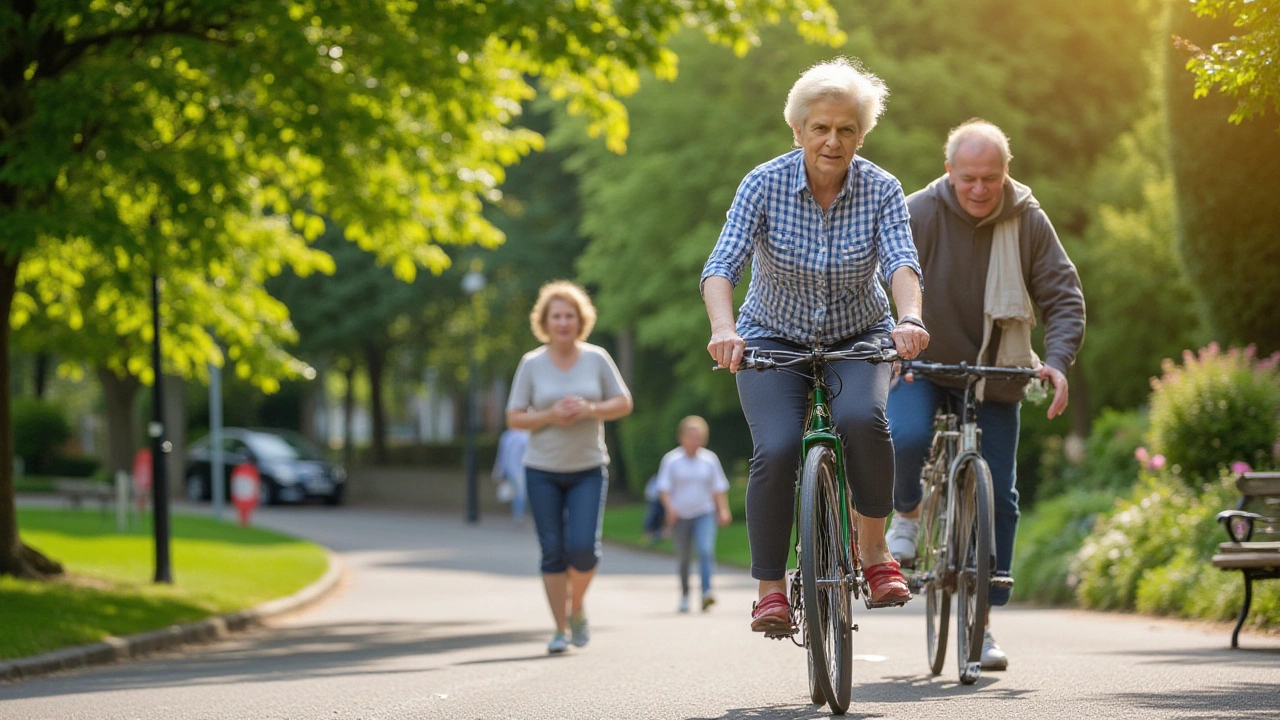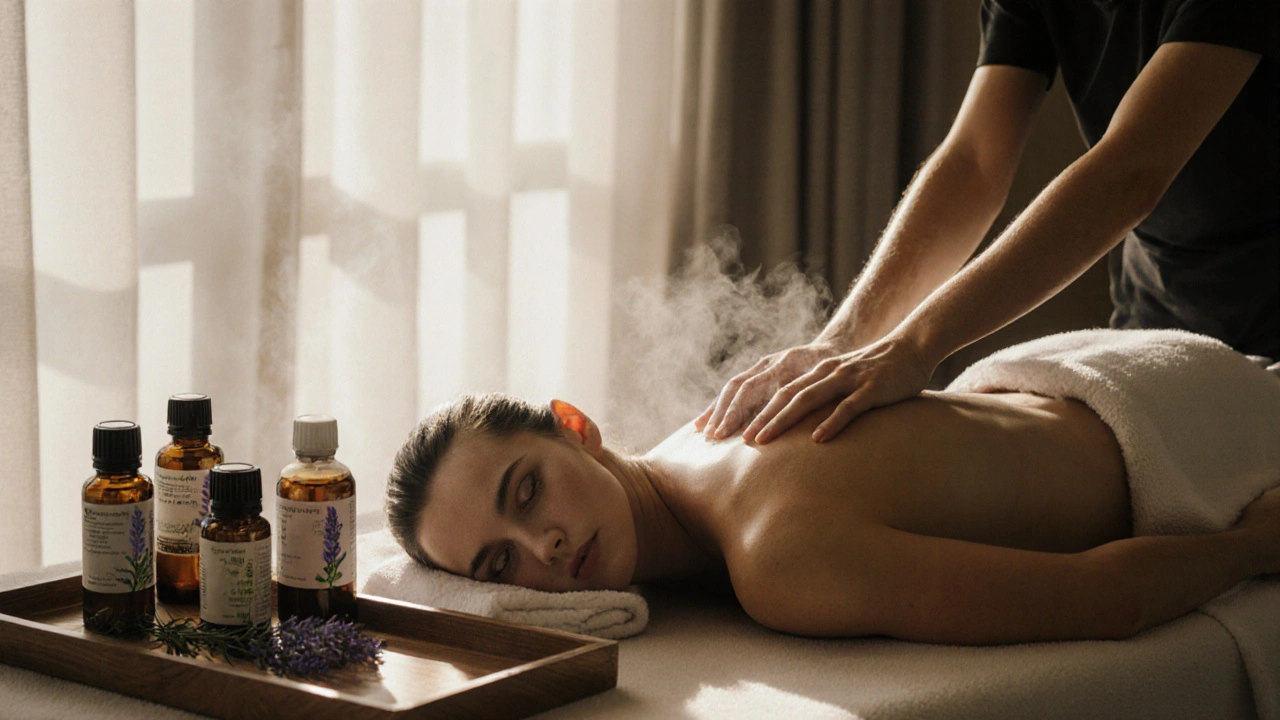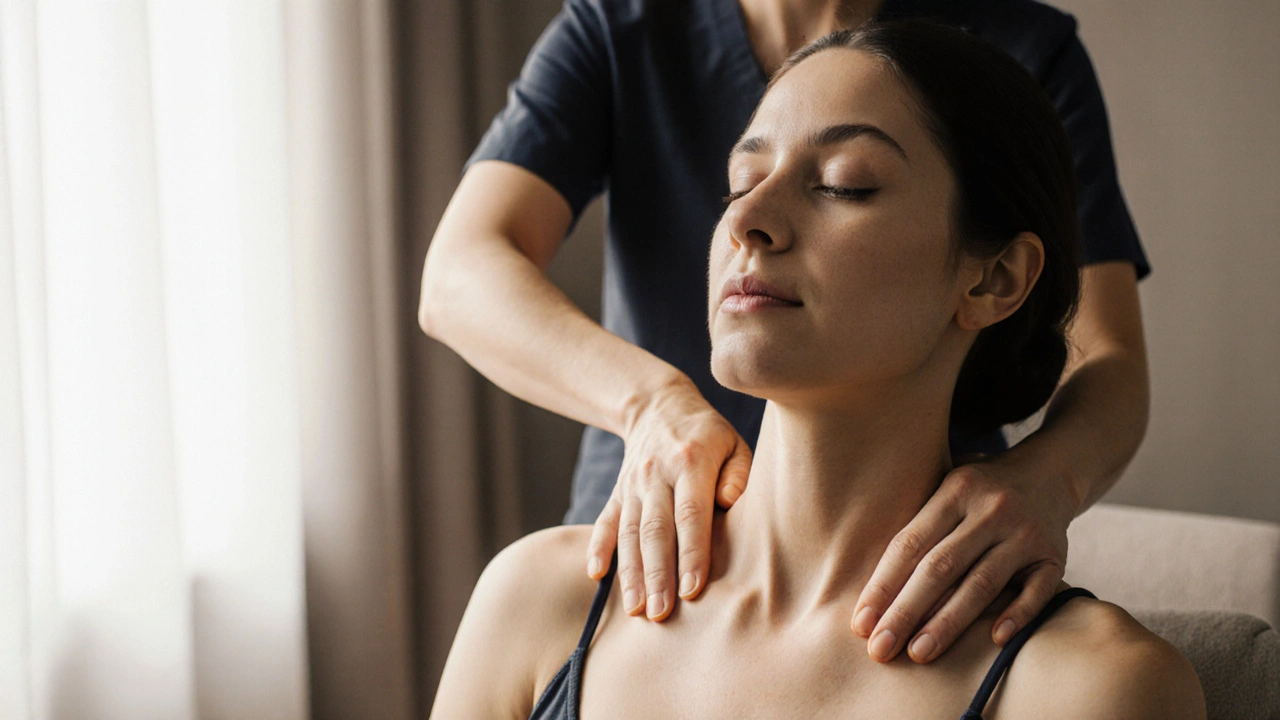Lymphatic Drainage Massage: Benefits, Techniques, and Real Wellness Results

If you’re tired, puffy, or just feel like your body is carrying extra baggage, you might be surprised by how essential your lymphatic system is. People rarely talk about it outside of biology class, yet it works behind the scenes to keep us healthy 24/7. Lymphatic drainage massage, a hands-on technique aimed at kickstarting this overlooked system, isn’t just some new-age hype. In fact, it’s grounded in decades of science—and people who try it often can’t stop raving about the fresh, light-all-over feeling they get after a single session.
Meet Your Lymphatic System: Your Body’s Cleanup Crew
Your lymphatic system looks a bit like a transparent, watery version of your bloodstream. Through a network of vessels and nodes, it scoops up toxins, waste, sloughed-off cells, even excess fluid, and sends them packing. But unlike your heart, the lymphatic system doesn’t have a strong pump. It relies on muscle movement, breathing, hydration, even gravity to do the bulk of its housekeeping. Wonder why your legs swell after a long flight or you get that puffy, groggy feeling after a stressful week? It could be your lymph tripping over itself, struggling to drain.
There are over 600 lymph nodes sprinkled through the body, with clusters in your neck, underarms, groin, chest, and abdomen. They’re like customs checkpoints, filtering out nasties before they can hitch a ride to your blood supply. But if these nodes or the thin lymphatic vessels clog up or slow down—maybe from illness, surgery, lack of movement, or just daily life—fluids can build up. That’s where swelling, puffiness, and even recurrent infections come into play. The lymphatic system isn’t glamorous, but it’s the silent guardian against illness and chronic fatigue.
Fun fact: the lymphatic system moves about 1.5-2 liters of lymph every day in a healthy adult. When it’s working right, you rarely notice. But let it stall, and your whole body starts sending you SOS signals. That’s why athletes use lymphatic drainage for faster recovery, and people with lymphedema are prescribed it as medical therapy. But healthy folks can benefit, too—it’s the wellness hack people are only just catching onto.
Lymphatic Drainage Massage: How It Works and Why It Matters
Lymphatic drainage massage is gentle—not your deep-kneading, muscle-busting sports massage. It works with the rhythm of your lymph flow, using light, sweeping motions and small, circular movements, almost like guiding water along a path. Therapists usually start at the neck and collarbone (where lymph rejoins the bloodstream), then move outwards to boost the natural filter-and-drain process.
This massage was formalized by Emil and Estrid Vodder in France during the 1930s. Today, it’s recognized in physical therapy and holistic wellness circles around the globe. The big draw? It helps reduce swelling (edema), soothes inflammation, and can clear toxins that slow you down. Studies from reputable clinics like Mayo Clinic have found that patients with post-surgical swelling often see dramatic improvements after a few lymphatic massage sessions. Some beauty clinics even pair this treatment with facial massages to carve out cheekbones and reduce under-eye bags, at least temporarily.
Lymphatic drainage isn’t purely for medical needs, though. Everyday folks swear by it to beat post-flight puffiness, wake up with radiant skin, shake off a cold, and get back to baseline after a stressful week. It’s like serving your body an internal spring cleaning—but with less detox juice and more actual science.
Here’s what really makes this massage stand out: it doesn’t hurt. If it does, you’re in the wrong place. The idea isn’t to crush knots or stretch muscles but rather to nudge fluid along its natural pathways. It’s common to feel lighter, clearer, or even need to hit the bathroom more than usual after a session (a clear sign things are moving along!). For some people with chronic swelling or immune issues, lymphatic drainage becomes an absolute game-changer.

The Real Benefits: Beyond the Beauty Buzz
You might have seen influencers showing off “before and after” selfie shots with sculpted jaws and bright eyes post-lymphatic facial treatment, but there’s more than surface-level glow. The real magic happens inside. People notice less swelling after injury and quicker healing after surgery. There’s real evidence that this massage can help push immune cells into overdrive—meaning you might ward off colds a little better in tough seasons.
Lymphatic drainage helps in flushing waste out of tissues, which makes it a strong ally for anyone recovering from injury, illness, or surgery. For folks managing lymphedema (often seen after cancer treatments), it’s a medical must. But even if you’re just fighting the “weekend face bloat” after a salty midnight snack, it works by gently moving stagnant fluid out of your tissues.
Many people report feeling calmer, less stressed, and even sleeping better after a session. It won’t cure a broken bone or replace a good workout, but it works wonders when your body’s screaming for a reset. There’s also evidence that it can improve digestive issues by helping to move fluid through the gut. And, of course, it’s totally safe when performed by someone properly trained—just make sure to skip it if you have active infections, heart issues, or uncontrolled blood pressure unless your doctor says otherwise.
Interesting twist: lymphatic drainage has even found its place in pro sports recovery routines. Athletes book it to flush lactic acid, reduce tired legs, and get an edge on competition days. It’s not just for people in pain—sometimes, it’s just for people who want to feel (and look) like their systems are running at full capacity.
How to Get the Most Out of Your Lymphatic Drainage Session
So you’re ready to try it? Here’s what to expect, and a few things to make the most of your experience. When you show up for your session, don’t expect deep elbows or painful kneading—the strokes should feel featherlight, sometimes barely more than skin contact. If you’re booking at a reputable clinic, the therapist might ask about your medical history to make sure it’s the right fit. Don’t worry if you feel sleepy during the massage; that’s completely normal.
Drinking plenty of water the day before and after your massage is key. Hydration helps your lymph move and clear waste faster, so you’ll actually see and feel results sooner. If you can, schedule your session on a lighter day, since you might want to take it easy for the next few hours. Some people even combine lymphatic drainage with other gentle therapies, like infrared sauna or guided breathing, for a next-level reset.
Want to extend the benefits at home? Mini DIY lymphatic self-massage is totally possible. Start with dry brushing—using a soft-bristled brush in gentle, upward strokes from your feet toward your heart. You can also try a quick face massage in the morning, focusing on cheekbones and jawline with your fingers, always brushing toward those main lymph nodes at the neck. Pair it with plenty of movement—walking, rebounding, or yoga—since muscle contractions help move lymph even more efficiently. Oh, and don’t forget those deep breaths. Lymph moves faster when you’re oxygenating well.
Keep an eye out for red flags: if you notice weird pain, red streaks, or feel ill after a massage, skip the DIY and check in with a pro. Lymphatic drainage is gentle, but it’s still real bodywork and shouldn’t be done if you’re sick or have major circulatory issues.

Is Lymphatic Drainage Right for You? Myths, Facts, and What to Know
So, do you need lymphatic drainage massage, or is it just a wellness fad? Here’s the real talk. If you often wake up puffy, get mild swelling after travel, or feel “stuck” during cold season, you’re likely a good candidate. Anyone recovering from minor injury or feeling sluggish can also see clear benefits—think of it like giving your house a deep clean before things get out of hand.
There are some things this massage can’t do. It won’t erase cellulite permanently, cure chronic disease overnight, or outsmart your body’s need for real movement and hydration. The best results show up for people who pair the massage with healthy lifestyle habits. That means regular walks, water, balanced food, and enough rest. If you’re under a doctor’s care or have specific conditions (like active cancer, heart problems, or deep vein thrombosis), get medical approval before booking a session.
Still, it’s hard to find a safe, science-backed therapy these days that feels more like a treat than a chore. For many, a lymphatic drainage massage is that rare blend—soft touch, measurable results, and some much-needed quiet time. Not bad for a system most people forget even exists. Whether you’re looking to bounce back faster or just want your body to work a little more like it should, giving your lymph some love could be the easiest wellness upgrade you try this year. Don’t wait to feel lighter—you’re already carrying enough.




Patricia Estera Esquejo
July 30, 2025 AT 14:20Honestly, I've always felt that lymphatic drainage massage is underestimated when it comes to its health benefits. It’s not just some fancy spa treatment!
The way it promotes detoxification and helps reduce swelling is crucial, especially for people who struggle with immune system issues or even post-surgery recovery.
It's like giving your body a gentle push to clear out all the harmful stuff and rejuvenate itself naturally.
But what really bugs me is how often people dismiss it as just a luxury or a fad, ignoring its potential to improve quality of life on a deeper level.
If more people really understood and trusted the science behind it, they'd be all over this like bees on honey.
Plus, knowing the techniques could empower individuals to care for themselves better at home without relying solely on professionals.
Seriously, embracing lymphatic drainage could be a game-changer in holistic health, and it deserves way more spotlight.
Clay Hamilton
July 30, 2025 AT 15:21I'm all for most natural remedies, but calling lymphatic drainage massage some miracle cure sounds a bit off to me. Sure, it probably feels good and might help with circulation but does it really do all the detox stuff people claim?
We do need to be cautious not to romanticize treatments that lack large-scale scientific backing. Many of the so-called benefits can easily be explained by placebo or the emotional relief of being cared for.
I mean, if someone feels better afterward, fine, but I wouldn’t jump on the bandwagon declaring it the next big wellness movement.
It feels like throwing shade on real medical interventions used for serious conditions.
That said, if it helps people relax and reduce stress in a way that complements traditional treatments, that’s a plus.
But let’s not pretend it replaces anything critical or is some kind of easy fix for complex health issues.
We should appreciate it for what it is—a supplementary method, not a cure-all.
Angie Angela
July 30, 2025 AT 16:23I just want to put it out there that proper usage and understanding of lymphatic drainage massage are paramount. People often misapply techniques or use incorrect pressure and then whine it doesn't work.
It's important to be precise and gentle; this isn't some robust deep tissue massage.
Also, when writing about this, PLEASE use correct terminology and proofread. It’s frustrating to see misinformation spread because of poor communication.
Clarity improves trust and empowers readers to use the methods correctly without harm.
And to those skeptical folks: yes, the lymphatic system literally needs stimulation and support as it does not have a pump like the heart.
So this kind of therapy makes physiological sense—and, done properly, shows real benefits documented in clinical settings.
Let’s keep discussions fact-based and grammatically solid for better understanding.
Paul Eric
July 30, 2025 AT 17:23I've seen many claims about lymphatic drainage massage but honestly wonder if it’s just the trendiest wellness buzzword going around.
People promise detox and energy boosts but rarely show concrete proof beyond anecdotal experience.
Many wellness treatments get hyped because they're non-invasive and feel good temporarily, but long term effects are rarely studied comprehensively.
Don’t get me wrong, I’m not against it, just weary of inflated expectations set by marketing.
Sometimes the real benefits are just the relaxation and mental calm these massages offer, not physiological healings.
Plus, if you mess up the technique, you might worsen symptoms rather than improve them.
So cautious optimism is the way to go until we get more robust scientific backing.
julia costa
July 30, 2025 AT 18:23Honestly, I've tried lymphatic drainage massages a couple of times and didn't feel much difference. Feels like regular massage but gentler.
Maybe it's because I have no idea about the proper technique or maybe it doesn't work for everyone.
The article helps break down techniques, but it's kinda vague about what real health benefits you can expect besides 'promotes drainage' or 'enhances wellness.'
I wish someone would provide clear before and after evidence or something more substantial.
Plus, it's a hassle to learn at home, so most people rely on professionals, which can be expensive.
Overall, looks neat but definitely needs more solid info.
Anyone else feel the same or did I just miss something?
fred mulder
July 30, 2025 AT 19:23This is a really interesting topic, and I appreciate the balanced overview in the post about lymphatic drainage massage.
From my experience, incorporating these techniques into a wellness routine can offer significant benefits, especially when combined with healthy lifestyle habits.
I use it myself as part of managing mild lymphatic issues, and it has helped improve swelling and promote a feeling of lightness.
One thing I'd add is that patience and consistency are key; it's not an immediate fix but something that supports your body's natural functions over time.
Also, learning proper technique either through a professional or trusted resources is important so you don't apply too much pressure or worsen existing conditions.
Thanks for bringing this topic to the forefront — holistic approaches like this deserve thoughtful attention.
Hoping more people can discover and benefit from it too!
Melanie Carp
July 30, 2025 AT 20:26😊 I've been incorporating lymphatic drainage massage in my routine and honestly, it's such a gentle, soothing experience. Besides feeling relaxed, I notice that my skin looks clearer, and I rarely feel bloated or heavy.
What’s really cool is that this type of massage encourages your body to move lymph fluid efficiently, which I didn't know much about before.
I find the step-by-step technique guidance super helpful, especially for those like me who prefer to do it at home.
It’s not just physical; it feels like a little reset for my whole system.
I’m glad wellness treatments like this are getting some spotlight because self-care is so important in our hectic lives.
If you decide to try it, be patient and gentle, and it will definitely pay off!
Good luck everyone on your wellness journey! 🌿
Maureen Addison-Smith
July 30, 2025 AT 21:28I must say, the scientific foundations of lymphatic drainage massage are quite compelling when scrutinized in clinical studies. The lymphatic system, often overlooked, plays a critical role in immune function and fluid balance.
Utilizing specific massage techniques to enhance lymph flow can theoretically aid in reducing edema and support detoxification processes.
However, it's essential to approach this therapy with an informed mindset and not treat it as an instant panacea for all ailments.
Proper training and understanding of contraindications are essential for safe and effective application.
Moreover, integrating such treatments into a broader holistic health plan, including diet, exercise, and stress management, optimizes outcomes.
I'm pleased that this post highlights practical techniques and tangible benefits, fostering a deeper appreciation for the lymphatic system's health impact.
Education remains the key to maximizing the positive effects while minimizing risk.
Alice Decogateaux
August 29, 2025 AT 08:46Can we talk about the strange obsession some folks have with detox culture and how things like lymphatic drainage massage are marketed?
It's like everything that promises to 'cleanse' or 'flush out toxins' suddenly becomes a multi-billion-dollar industry without concrete proof.
I wonder if this is partly fueled by fears pushed by wellness industries, making us paranoid about invisible dangers inside our bodies.
Then they sell us massages or foot baths promising miracle results.
Don’t get me wrong, some people feel better and that's valid, but we need to critically question what unseen pressures are affecting our choices here.
Are we being empowered or manipulated under the guise of self-care?
This stuff warrants a skeptical eye along with an open mind.
Frank Naessens
August 29, 2025 AT 10:10Hey everyone, thanks so much for the insightful comments and genuine curiosity around lymphatic drainage massage!
As someone who’s researched and practiced these techniques, I want to emphasize that it’s not just hype — the physiological basis is quite real and well-documented.
That said, it’s critical to approach this method correctly and not expect overnight cures; it’s a supportive therapy that complements proper medical care and lifestyle.
To those wondering about at-home methods, starting with gentle, light-pressure strokes towards the lymph nodes is best, and you can find plenty of trustworthy tutorials online.
I also encourage discussing this therapy with your healthcare provider, especially if you have existing conditions like congestive heart failure or infections.
Ultimately, integrating lymphatic drainage massage into daily wellness can meaningfully reduce swelling, promote relaxation, and support detoxification when done right.
Keep the questions coming, and thanks for making this a thoughtful community space!